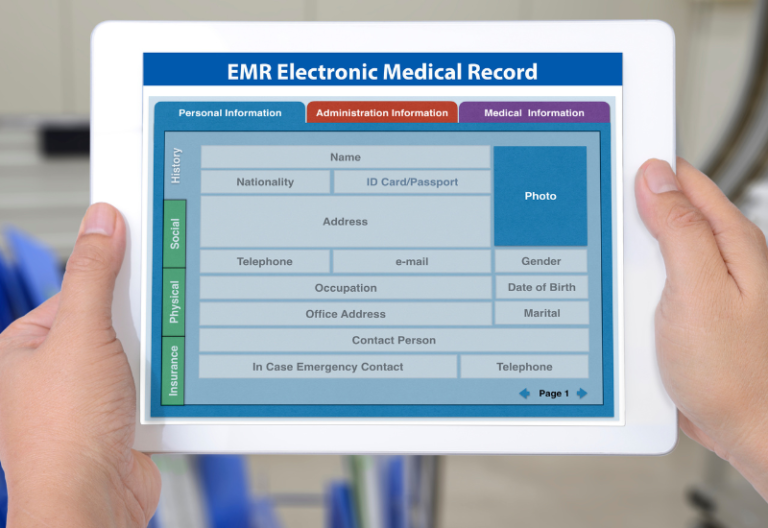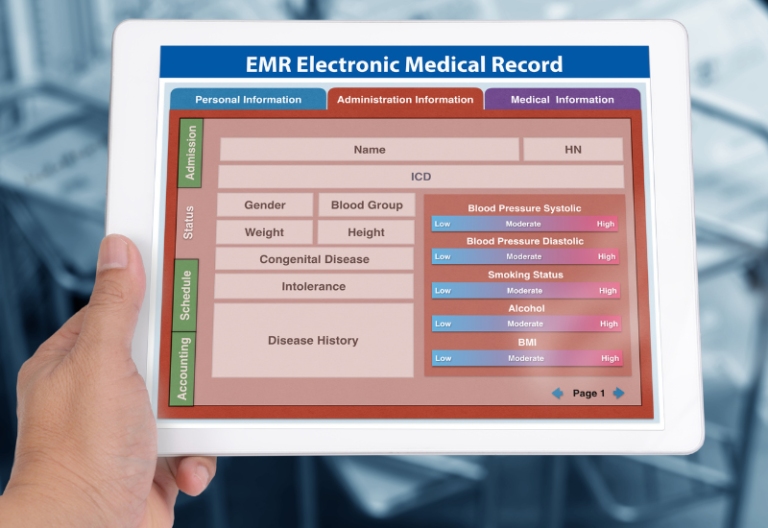Challenges are bound to arise when transitioning from paper-based records to EMR systems. Staff might even find the transition overwhelming, considering the steep learning curves. Thus, it is equally important for organizations to implement EMR training.
Not only does it help staff become more efficient at using EMR software, but it also helps your organization comply with HIPAA and HITECH laws.
Table of Contents

Benefits of Effective EMR Training
There are several benefits of EMR training. With EMR training, healthcare providers can:
Learn to use the EMR efficiently
Formal EMR Training cuts down the time for staff to learn a new system. Research shows that lack of training results in duplication and repetition of work, slow EMR adoption, and inability to use EMRs to their full potential. Getting trained in using the EMR helps providers navigate and utilize the EMR system effectively, leaving them more room to focus on patient care.
Prioritize patient care
Proper training helps healthcare providers use an EMR system accurately, reducing the risk of errors that could compromise patient care. For instance, staff may accidentally input wrong medication doses, commit copy-paste errors, use the wrong template, or rely too much on automated data. EMR training helps them become more aware of these errors and avoid them.
Protect data privacy
Understanding the security features of an EMR system helps healthcare staff maintain the privacy of protected health information (PHI). Proper training educates users on best practices and recommended settings to minimize the risk of a data breach.
Regulatory compliance
EMR Training is crucial for healthcare professionals to comply with regulatory requirements, primarily HIPAA or the Health Insurance Portability and Accountability Act. This law protects health information maintained, stored, and transmitted in EMRs. EMR training helps healthcare providers comply with the standards set by the law.

Types of EMR Training Programs
There are several types of EMR training programs. Among these, CBT and blended are the most common methods:
One-on-one training
In one-on-one training, an individual receives personalized and tailored instruction from the trainer. This type of training is suitable in several scenarios. Use it when learning about specialized and more complex features of an EMR or in situations where the individual’s role requires a customized approach for specific use cases. One-on-one is also beneficial when staff need to respond to urgent patient needs or update records promptly. Personalized instruction can expedite the learning process to deal with these time-sensitive tasks.
Computer-based training (CBT)
CBT delivers training through a computer, often via software or online platforms. Many EHR vendors provide CBT training online since it’s more convenient for their customers. Once providers subscribe to the software, the vendor may offer free training as part of their subscription. These trainings may be live or self-paced. In self-paced learning, trainees can access and view pre-recorded videos, allowing them to study at their own pace.
Research from the International Journal of Medical Informatics mentions several CBT platforms used in EMR training:
- Prototype Academic Electronic Medical Record System (AMER) – a prototype or experimental EMR is used for educational purposes, allowing users to practice in a controlled environment.
- AEMR/Simulated EMR (Sim-EMR) – The EMR is a simulated version of an EMR system. It helps patients practice using an EMR without handling actual patient data.
- Mobile-based AEMR – The AMER system is optimized for mobile devices, allowing learners to practice anywhere using their own devices.
- eLearning – Learning is delivered through online platforms. It can include multimedia presentations, interactive exercises, and assessments.
- Electronic educational materials – This encompasses educational content in electronic forms. It includes videos, documents, and other multimedia materials.
Blended learning
Blended learning combines different training methods. It often integrates in-person and online learning. Trainers may include classroom sessions, online modules, and hands-on practical exercises. This type of learning helps learners enjoy the benefits of an online training course while giving them space to receive live instruction from their instructors.

Designing a Successful EMR Training Plan
Crafting effective EMR training is vital for healthcare professionals to master an EMR system and adopt new technology while overcoming common barriers. Transitioning from paper-based records to a digital system can be challenging, and a well-planned training program can be a huge help.
Consider the following when designing a successful EMR training plan:
Assess staff needs
Evaluate the specific needs of staff. Identify their roles, responsibilities, and difficulties in using an EMR. Knowing this information can help healthcare leaders craft more training programs that effectively address their staff’s needs.
Set clear objectives
Define the objectives of the EMR training program. Is it to transition to an electronic system from a paper-based system? Or are staff already familiar with a different EMR system and are shifting to a new one? Establishing the objective of the training creates a more focused training session.
Take advantage of EMR training from an EMR vendor
Vendors usually provide training programs for their EMR systems. Since not all EMR systems offer the same features, utilizing these training programs allows staff to become more acquainted with the EMR they will interact with daily. It also eases the burden on providers to design an EMR training program.
Utilize CBT platforms
Aside from vendor EMR training materials, healthcare providers should leverage CBT Training platforms. CBT training programs for EMR include the ones from MedixOnline and Ashworth College. These online training programs help staff understand the basic features of an EMR system.







